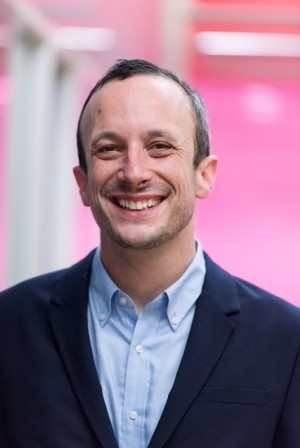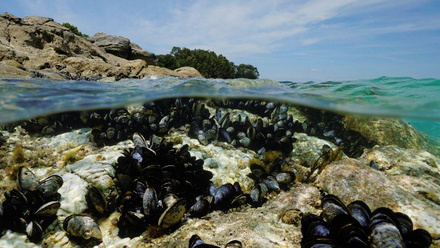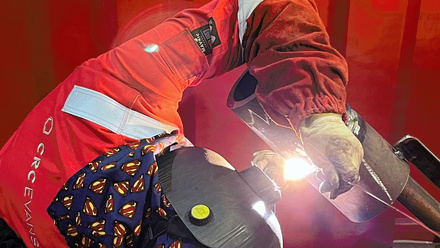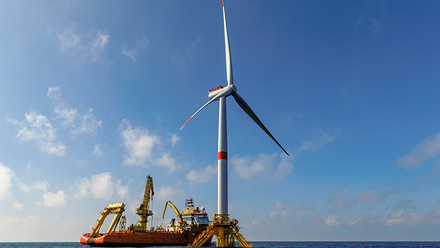Imperial's Materials Lecturer of the Year - Sharing a passion for materials science
Materials World catches up with Dr Ifan Stephens ProfGradIMMM, Imperial College London’s Materials Lecturer of the Year, on what makes a good lecturer and the future of research in renewables and electrochemistry.

Some of the most talented students are now coming to our field
What do you think makes a good scientific lecturer and what are your tips on breeding enthusiasm and interest?
I was not expecting this accolade at all but was most touched when I received it. I am still learning what makes a good scientific lecturer. At my former institution, the Technical University of Denmark, I attended an extensive 150-hour long course on teaching, among other things. That course gave me the confidence to experiment with different teaching styles, and to always strive to improve. I find it particularly useful to learn best practice from my colleagues. That said, what may work for a colleague does not always work for me. For instance, while students have reported that they like the fact that some of my colleagues derive equations by hand during lectures, they do not appreciate it when I do it – my handwriting is too messy and I write too slowly! Students like to be informed of the importance of what they are learning – they get particularly enthused if I discuss issues concerning sustainability or renewable energy.
You taught at Massachusetts Institute of Technology (MIT) as a visiting professor and the Technical University of Denmark (DTU). How did teaching and learning priorities differ in these countries compared to your UK Imperial residence?
Each institution has unique priorities and different characteristics of students. In MIT, the students were effusive and forthcoming in their praise if they liked my lectures. However, I must admit that I was somewhat intimidated by the requirement to teach solely using a blackboard. At DTU, I was always impressed by how well the students worked together in groups. The students at Imperial have some of the best qualities of those at MIT and DTU. Within the Imperial community, there is an emphasis on combatting discrimination, which I appreciate enormously. Even so, we still have a long way to go if we really want to ensure that everyone gets the opportunities they deserve. In the coming year, I plan to get more involved in outreach to under-represented minorities.
What have been some of the highlights in your career so far?
On the scientific side, I am most proud of the work I have done on oxygen reduction in fuel cells and for electrochemical hydrogen peroxide synthesis. I have investigated both the factors controlling the reaction and discovered new catalysts with extremely high activity. In particular, the work we did on hydrogen peroxide synthesis led to the establishment of the spin-out company HPNow, which now employs 12 people and sells commercial electrolyser units. I was also extremely happy when I was recently awarded €2.74mln from the European Research Council to work on nitrogen reduction – this funding will enable my team to do some really exciting science over the coming years.
What is the state of renewable energy R&D and what makes it such an interesting field of investigation?
As a result of the dramatic drop in cost of solar power and wind power, the interest in using the surplus electricity to make fuels and chemicals is burgeoning. There are enormous opportunities, both to increase the uptake of more established technologies, such as water electrolysis, and for more risky frontier research, such as nitrogen reduction. Some of the most talented students are now coming to our field – indeed, I am extremely proud of my group members.
Do you think there is enough of a research and funding drive into electrochemical devices and renewable technologies in the UK?
With the recently established Faraday Institution, the UK has started to expand its R&D funding in electrochemistry, with a specific focus on battery technologies. However, we also need to fund research in the deployment of hydrogen and other related energy carriers, such as ammonia. These have the potential to decarbonise the areas that are challenging, such as heating, the chemical industry, heavy duty transport and shipping.
Offshore wind bestows the UK with an enormous potential for renewable energy, which needs to be stored. Moreover, we have outstanding academic researchers and leading industrial companies in materials for hydrogen production and utilisation. Despite these opportunities, there are no major research initiatives in the UK. In contrast, the German Government has very recently committed €7bln to hydrogen, at least 10% of that amount will go to R&D. In the UK, we lack anything even remotely close to that figure. With Brexit, the situation may even get worse, especially if we get locked out from future European research programmes.
What are some of the most exciting developments in electrochemical devices and electrocatalysis?
There have been some very exciting developments in understanding how to drive electrochemical reactions that are intrinsically difficult to catalyse, such as nitrogen reduction to ammonia or carbon dioxide reduction to ethylene. The current synthesis of ammonia and ethylene result in carbon emissions equal to the global aviation industry. What fascinates me is that the nitrogenase enzyme in nature is able to catalyse both reactions efficiently and at room temperature. Colleagues at Imperial, such as Andrea Fantuzzi, Bill Rutherford, Maxie Roessler and James Murray, are enlightening me on the intricacies of enzymes.
Indeed, I think we can all learn enormously by learning from adjacent fields of electrochemistry. At Imperial College, we have recently set up a new Electrochemistry Network, which I am leading alongside my colleagues Anna Hankin and Clotilde Cucinotta – we already have 50 members of academic staff on board and many more students and post-docs. We hope that the Network will facilitate learning from other colleagues within the vibrant electrochemistry community at Imperial.
Where do you think there are currently skills gaps when it comes to nanotechnology and nanoscale characterisation in particular?
To a large degree, what unifies different areas of nanotechnology and materials science is the characterisation methods researchers use. To enable unforeseen future technological developments, it is essential that researchers are able to translate knowledge from one area of nanoscale characterisation to another. To this end, at Imperial and UCL, we are training large cohorts of students through our EPSRC-funded Centre for Doctoral Training in Advanced Characterisation of Materials. Our students are as adept at characterising the degradation of human implants as they are at monitoring the changes occurring to battery electrode materials over the course of the lifetime of the device.
Are there any under-explored materials subjects that you would encourage aspiring students to study?
I would encourage aspiring students to choose the subjects where they believe that they can make the most positive impact.







